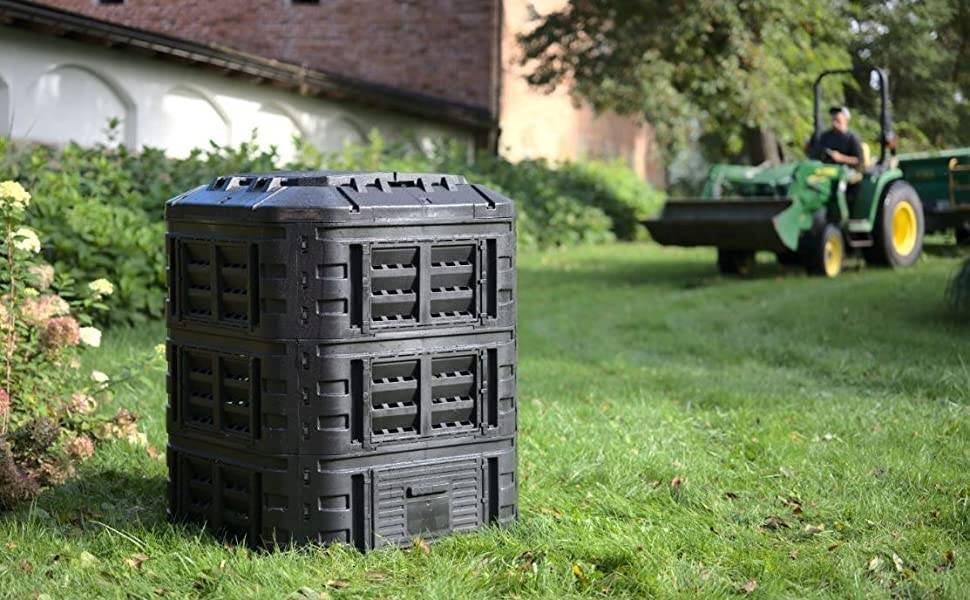Beautiful Plants For Your Interior
4 Best Fox Repellent Methods

It’s nearly impossible to prevent a determined fox from entering your garden, short of turning it into a fortified militarised zone and nobody wants that.
In addition, the physical exclusion of foxes will often result in the exclusion of non-target mammals like hedgehogs.
Many people who have fox problems tend to buy fox deterrents from their local garden centre; these purpose-made deterrents, some chemical, physical and or audible, include ultrasonic noise emitters, automatic water sprayers and some even use prickle strips.
Others prefer to use concocted homemade solutions found on the internet; these are often ‘sprayed around’ the garden in various locations; Chilli pepper and garlic’ mix seems to be a favourite! It would seem however that all fox repellents, including the above proprietary deterrents, have varying degrees of results. Let’s find out.

Best Fox Repellent: Homemade Chilli & Garlic Mix?
What’s The Attraction?
Before resorting to one of the various fox repellent methods, we suggest trying to find out what attracts the fox to your garden in the first place; and then trying to remove or disguise the attraction would probably be the best approach.
Foxes can be attracted to your garden for all sorts of reasons. Invest in a compost bin or fence off your compost heap to keep the fox away; if the fox keeps raiding your compost heap, this could be the answer you’re looking for. Similarly, you must ensure that any livestock or pets are secure if they are attracting the fox to your garden. However, in our research, there is no evidence that foxes represent a significant threat to pet cats or dogs.
Which Fox Deterrent is Best?
If you have tried to remove and or disguise the problem of your visiting fox, there are still many good alternatives to at least try and deter or repel foxes further from entering your home and garden, but none as we said are 100% effective in all situations where foxes are a problem. So which one is better?
Let’s explore the options; here is our quick guide to some of the best fox-repellent methods used in the UK.

If a Fox is Raiding Your ‘Compost Heap’ Try Investing in a Secure Compost Bin.
Ultrasonic Noise Emitters
The use of homemade proprietary fox repellents has long been in dispute regarding their effectiveness. Studies have found that the efficacy of these repellents was dubious. Despite its low efficacy, some authors have endorsed its use, including Andy Wilson and Trevor Williams of The Fox Project. However, in stark contrast, ultrasonic noise emitters have become a more effective solution than these proprietary repellents.
Ultrasonic noise emitters work by emitting high-frequency sounds that disturb foxes and can also be set to affect other animals such as birds, cats, and squirrels. These high-frequency sounds are inaudible to humans, but they disorientate or irritate the intended animal; which will normally quickly leave the affected area, ie. Your garden.
Depending on models, often different levels of pitch can be set according to the animal you wish to deter. Some of these devices (dependent on the model) can also ’emit’ the sound for a ‘predetermined’ amount of time.
Some of the best fox repellent ultrasonic models are solar-powered, while others are battery-operated or some even require a power source. No matter what model, power consumption is minimal, which is beneficial if you need more than one emitter.
There are several models of ultrasonic repellers available on the market. They are small and not intrusive to the eye; included are models with flashing LED strobe lights, and passive infrared sensors which activate the emitters; some emitters even work on the detection of body heat, which is a plus for a larger-bodied animal like the fox.
Such emitters should be placed close to the points in your garden or area where the offending animal enters, in this case, the fox, to create the ‘alarm’ almost as soon as the animal enters the property. Being able to monitor quite a large area, these emitters are suitable for those who want to deal with their intruder/s with minimal effort.
In our opinion, ultrasonic noise emitter deterrents are the most effective fox-repellent method currently being used in the UK.

Best Fox Repellent Methods: Ultrasonic Noise Emitters Can be Solar Powered
Automatic Water Sprayers
Another option that is simple and often used as a fox deterrent is a ‘water jet spray’ connected to a garden hose and tap. The water sprays are activated by passive infrared ‘motion’ sensors, so when a fox crosses the detection area the automatic water sprayers go off.
One of the major setbacks however with this system is it is not target-specific, so humans, children, and pets will all get a ‘squirting’ if they accidentally activate it. There are, however, certain models on the market, like the Orbit 62100 Automatic Water Sprayer that does give you an option for day only, night only, or 24-hour protection, which does give you some degree of ‘flexibility’ when setting up the spraying requirements.
The use of water sprayers is a ‘humane’ fox deterrent, as it does not affect the animal in any way apart from them getting a fright and a bit of soaking when they trigger the sprayer.
Detection ranges can vary, but normally in the 30 – 40ft (9 -12 m) range, with an angle of view of around 120 degrees.
Best Fox Repellent Methods: Automatic Water Sprayers Will Give The Fox a Fright When Activated
Prickle Strips
Another of the problems homeowners face with foxes in their gardens is digging, urinating and pooping everywhere, this includes flowerbeds, lawns, planters etc.
To help combat these, homeowners turn to the use of a ‘physical’ fox deterrent, ‘prickle strips’. These strips are designed to give maximum discomfort with minimum harm. (will not injure the fox) and are made from a mesh rubber strip construction; some are often flexible enough for plants to grow through them but are irritating to the animal, thus the animal becomes so annoyed when ‘digging’ or ‘scratching’ in a bed or planters for instance; that they no longer wish to ‘dig’ in that location.
Prickle strips, which come in rolls or mat formats of varying sizes, are UV and weather-resistant and can be cut and bent to suit various size areas. You can use them on several planted areas at once to help prevent foxes from entering and or digging into your garden.
These strips can be easily installed by yourself, and they are a great option for lawns.
Prickle strips not only stop foxes digging but also work equally well for problematic cats and dogs. They are a really simple idea inexpensive to buy and easy to install and above all, they are harmless to animals. Some models can even be fixed to the tops of fences to stop foxes and or cats from jumping in over the fence.

As a Fox Deterrent Method, ‘Prickle Strips’ Can be Placed in Flower Beds to Deter Digging.
Commercial and Homemade Fox Deterrents
Foxes often leave urine and droppings around gardens to mark their territories. This can lead to problems if you simply remove the fox poop for instance afterwards. Removal like this will just encourage more fox ‘droppings’ in the next night or two; due to scent marking.
To avoid this problem, you can apply ‘chemical’ repellents to the ‘poop-affected areas once you remove and clean off any poop left there. Then mix a ‘sachet’ of the chemical with water and spray it on the affected area. Once the chemical repellent has had a chance to work, the fox will stop visiting the area. Scoot is probably the UK’s best-known chemical fox repellent using this method.
These chemical repellents work by simply ‘mimicking’ a fox’s scent marking, ie. an artificial scent mark. Thus, the fox will leave the area, believing that another fox has invaded or taken the territory over.
The use of these types of repellents is totally harmless to animals (pets included), plants, (edible or otherwise) lawns, and shrubs; providing protection against fox fouling, digging, urinating and scent marking all in one application. Although it may be necessary to apply the chemical more than once for a determined fox or after heavy rains; this type of ‘fox deterrent’ is very effective generally.
As mentioned, some chemical repellents mimic the fox marking scent, while others mask the fox’s scent and provide a pungent odour.
Granules like those manufactured by Karlsten are sometimes sprinkled around the affected areas; these often have strong natural scents like citronella. Sprays may also be used that contain strong citrus and acidic smells, all of which mask the ‘scent marking’ and put off the foxes and stop them from entering your garden. All of these chemical products advise that they are safe for the intended animal (fox) as well as domestic pets and humans.
There are many homemade recipes that offer the chemical approach and purport to do the same as the commercial approach. These homemade recipes play havoc with the fox’s senses, as do the commercial alternatives.
All the homemade options use natural ingredients like garlic, vinegar, chilli peppers, cayenne pepper, and capsaicin for instance.
One recipe I have come across advises that to make an organic fox repellent, one should boil chilli peppers and garlic together, and put in a blender with some water.
Strain the ‘liquid’, then place the remaining liquid in a garden sprayer and spray this mixture anywhere in your garden where foxes are a problem; they say it’s a great natural repellent that is highly effective and is a great way to get rid of foxes in the garden without causing any harm.
I am unable to confirm if this method is in fact correct, but many people swear by these natural solutions.
Using a Chemical Fox Deterrent is Another Popular Method.
Foxes And The Law
For those of you who have fox problems and are considering laying down repellents or deterrents. I would just like to make you all aware of the UK laws concerning foxes, the control of foxes and the legality of fox control.
To be clear, there are no specific laws that prevent the killing of foxes. However, saying that, there are sections of existing acts that regulate how any control can be carried out, and what materials and methods can be used.
Several general acts, including the Protection of Animals Act of 1911 and The Wild Mammal (Protection) Act of 1996, make it illegal to cause ‘unnecessary suffering’ to an animal. We will not go into specifics here on this page, but we strongly advise making yourselves conversant with those parts of the act that may or may not affect your actions.
It has been written that some farmers used to recommend spraying repellents like turpentine, diesel, creosote, paraffin, and other chemicals to repel foxes; but these days using such chemicals is illegal and results in a fine if you’re caught using these substances.
In order to use chemical repellents, they must be certified. Repellents, such as Scoot, are currently certified as fox deterrents and include pungent-smelling substances such as citronella oil and methyl nonyl ketone, which are intended to disrupt a fox’s ‘scent map.’
FAQs
What do I do About an Injured Fox?
If you find an injured fox, contact the local police station or The National Fox Welfare Society for help and advice in your area.
Will a Fox Keep Coming Back?
Yes, quite possibly they will keep coming back.
It is likely that foxes will return repeatedly if there is a water source such as a pond, fountain, swimming pool or puddles; or if you are feeding other wildlife such as birds or hedgehogs, or if there are bins from which they can scavenge food.
Do Flashing Lights Scare Foxes?
Yes, flashing lights do scare foxes, but foxes are smart, so if they discover that the light hasn’t moved in weeks, the method may not work. In urban areas in particular, lights especially flashing lights may not be welcomed by the neighbours. Nonetheless, they might act as a deterrent.
Besides flashing lights, foxes also hate, vibrations, sudden movements, loud noises and surprises. Just make the garden less appealing to them, for varying degrees of success.
Do Foxes Stay in The Same Area?
No, generally not, as foxes born in cities may disperse to the country, and vice versa.
However, generally, foxes seem to concentrate on specific locations (feeding and resting spots) throughout their eventual habitat; which may span several miles/kilometres but is generally limited to a small area, even then they will only be using only a fraction of their territory.
Will a Fox Eat a Cat or Small Dog?
Despite their status as predators, foxes rarely pose a danger to cats or dogs. Mice and even rabbits are on their menu, so a fox might theoretically kill or injure a cat or small dog, but it would be quite unusual.
A typical house cat, although considerably smaller than a fox, is renowned for its self-defence skills, so foxes usually avoid attacking them. Foxes, on the other hand, may attack small kittens or very small dogs.
Conclusion
If you have a fox problem, at home in your garden or elsewhere, then you can see from the options above, there are several ways to address the problem. Individually applying any of these fox-repellent methods, will achieve success to a certain degree, no doubt though the best fox-repellent methods involve a combination of 2 or more of the above deterrents.
If this article has helped you in any way, then please share it with your family and garden-loving friends.
Don’t forget to check out our FAQ page for answers to many more gardening queries and questions you may have.
